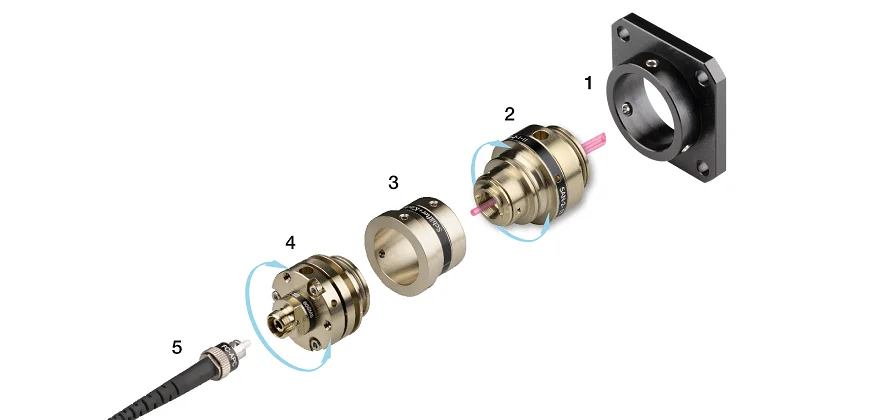Using anamorphic optics to increase coupling efficiency

A circular beam profile is preferred over the elliptical profile usually provided by laser diodes LD or by tapered amplifiers TA when coupling into single-mode fibers in order to increase the coupling efficiency. Due to the different collimated beam diameters in the two elliptical axes the calculated optimum focal lengths are different for the two axis and a compromise must be found by doing the calculation for the optimum focal length with an effective beam diameter.
Anamorphic optics act one-dimensionally on the elliptical profile of the collimated beam and adjust the larger beam diameter to the dimension of the smaller one, producing a radially symmetric beam. The focal length of the laser beam coupler can then be chosen optimally for a circular beam resulting in an increased coupling efficiency.
Components for Beam-shaping and fiber coupling

Scheme of anamophic fiber coupling
The optically active axis of the anamorphic beam-shaping optics (2) is orientated in parallel with the longer elliptical axis of the collimated laser beam.
The circular V-groove at the anamorphic optics input provides a positive, rotatable and lockable connection with the adapter with system mount Ø 19.5, e.g. 60A19.5-F (1).
When coupling into polarization-maintaining fibers (5), the (slow) polarization axis of the fiber - together with the laser beam coupler (4) - must be aligned with the polarization axis of the laser beam.
The alignment of the polarization axis is facilitated by the rotatable and lockable adapter flange 19.5AM25-L (3) on the output side of the anamorphic optics.
Components
1 Adapter with system mount Ø 19.5, e.g. 60A19.5-F
2 Anamorphic beam shaping optics series 5AN (here reducing the larger elliptical beam axis)
3 Adapter 19.5AM25-L
4 Laser Beam Coupler series 60SMS with TILT adjustment